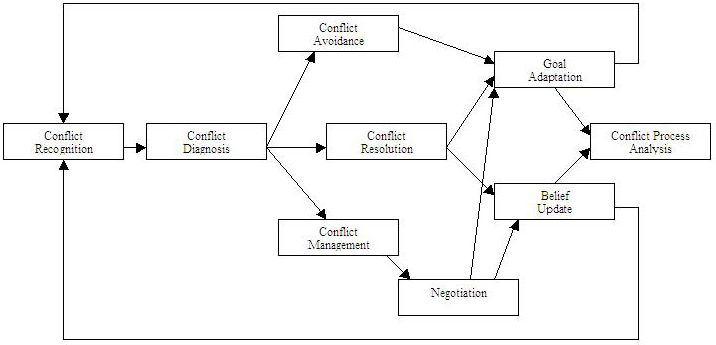
Now we summarize our general discussion in an action model for agents who deal with conflicts. It is essential that it comprises the basic entry steps for conflict handling, it respects the different strategies to deal with conflicts, uses elementary action points to vitalize the strategies and ends up with a learning step.

The Conflict Recognition Action has as an input, either environment information or the status of the internal knowledge base. The CRA checks if the input gives rise to a current or potential conflict. Thus, the output of the CRA is a classification of the conflict, together with an importance factor, which states the urgency of it.
The Conflict Diagnosis Action uses the output of the CRA, together with context information from the environment and respective knowledge from the knowledge base as input. The CDA analyses the conflict with respect to the physical/knowledge distinction, the internal/bi-lateral/multi-lateral differentiation, the prepositional attitudes, and the consequent of the conflict. The CDA may also decide which of the subsequent actions should be triggered, based on the result of the analysis and the realisation of the agent. The CDA outputs the complete description of the conflict.
The result of the CDA gives rise to the three main action points:
Once a conflict is diagnosed, a change has to be made. This is either an adaptation of the agent's goal or an update of the knowledge bases. The output of the respective action point is the description of the conflict and the change action performed. This output serves as an input to the conflict resolution action.
The Conflict Process Analysis action serves for learning from solved conflicts. The CPA takes in the output of the change action as well. This is stored here and is used for analysis purposes.